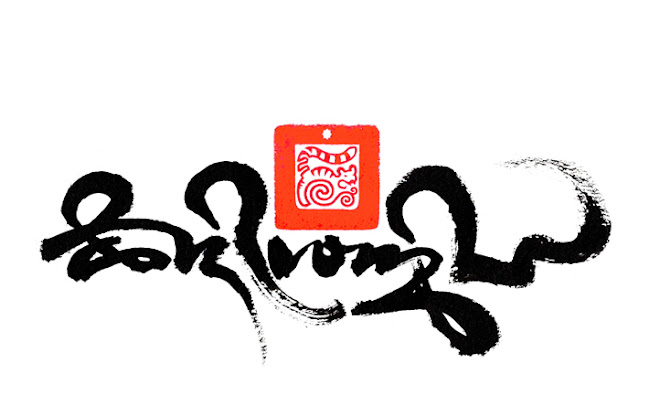It is with pleasure to announce the launch of a new website of Tibetan calligraphy & iconography:

'Laughing in the face of jealousy' Acrylic paint, gold and silver leaf on heavy water-colour paper, 57x76, 2006. Copyright Tashi mannox 2009.
Tashi’s creative process involves a fundamentally meditative approach, based firmly in a life long dedication in traditional Tibetan calligraphy.
He attributes the element of spontaneity in his work to "the Ultimate Mind", which, he believes, is as instrumental in shaping the final image as his brush.
In the execution of the contemporary Tibetan calligraphy pieces, Tashi’s trained brush strokes move freely across the paper, harnessing the power of both negative and positive space. The philosophy at the heart of his creations is born from his years as a Buddhist monk. Moreover, the influence of his western heritage and personal charm and vitality make these fascinating contemporary works.
Using pure, almost sculptural forms in many of his works, combined with wit and insight, Tashi produces works that vary from a more abstract, confident and bold expressions, to a lighter and precise calligraphy that seems to dance around the page. This variation from playful to serene connects with the viewer, evoking a sense of intrigue, space and ease.
The introduction of colour and iconographic images in Tashi’s later works; illuminates his calligraphy rich in symbolism and meaning.


































